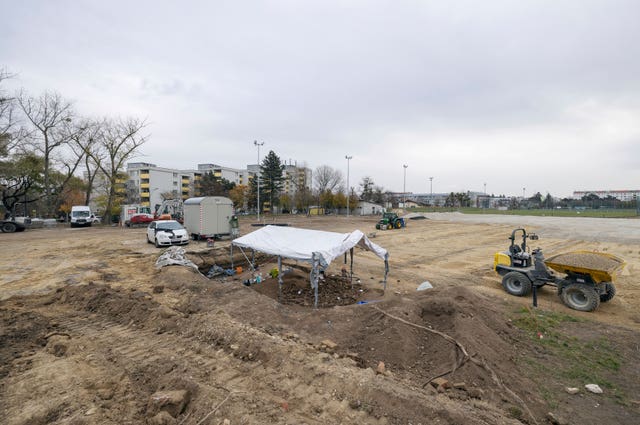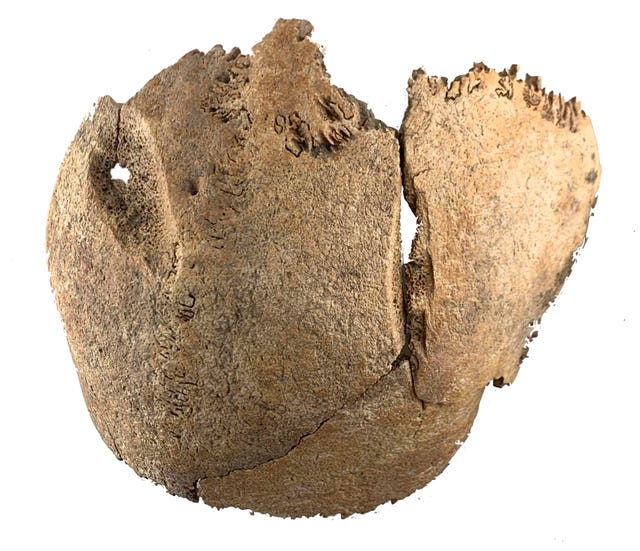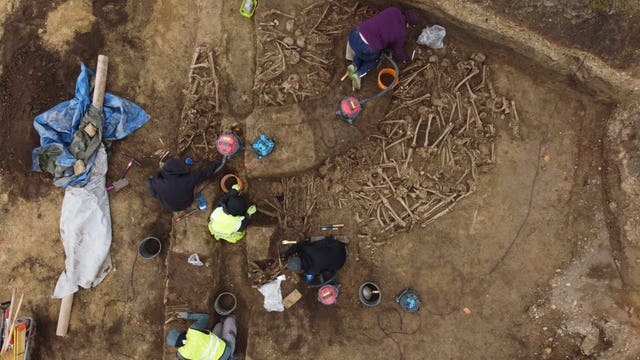Vienna archaeologists reveal mass grave of fighters in Roman Empire-era battle
Experts at the Vienna Museum gave a first public presentation of the grave – linked to ‘a catastrophic event in a military context’.

As construction crews churned up dirt to renovate a Vienna football field last October, they happened upon an unprecedented find: a heap of intertwined skeletal remains in a mass grave dating to the 1st-century Roman Empire, likely to be the bodies of warriors in a battle involving Germanic tribes.
On Wednesday, after archaeological analysis, experts at the Vienna Museum gave a first public presentation of the grave – linked to “a catastrophic event in a military context” and evidence of the first known fighting ever in that region.

The bodies of 129 people have been confirmed at the site in the Vienna neighbourhood of Simmering.
The excavation teams also found many dislocated bones and believe the total number of victims tops 150 – a discovery never seen before in Central Europe.
“Within the context of Roman acts of war, there are no comparable finds of fighters,” said Michaela Binder, who led the archaeological dig.
“There are huge battlefields in Germany where weapons were found. But finding the dead, that is unique for the entire Roman history.”
Soldiers in the Roman Empire were typically cremated until the 3rd century.

The pit where the bodies were deposited suggests a hasty or disorganised dumping of corpses.
Every skeleton examined showed signs of injury – to the head, torso and pelvis in particular.
“They have various different battle wounds, which rules out execution. It is truly a battlefield,” said Kristina Adler-Wolfl, head of Vienna city archaeological department.
“There are wounds from swords, lances; wounds from blunt trauma.”
The victims were all male.
Most were aged 20 to 30 years old and generally showed signs of good dental health.

Carbon-14 analysis helped date the bones to between 80 and 130 AD.
That was cross-checked against known history of relics found in the grave – armour, helmet cheek protectors, the nails used in distinctive Roman military shoes known as caligae.
The most indicative clue came from a rusty dagger of a type in use specifically between the middle of the 1st century and the start of the second.
The research continues.
Only one victim has been confirmed as a Roman warrior.

Archaeologists hope DNA and strontium isotope analysis will help further identify the fighters, and whose side they were on.
“The most likely theory at the moment is that this is connected to the Danube campaigns of Emperor Domitian – that’s 86 to 96 AD,” Ms Adler-Wolfl said.
City archaeologists said the discovery also reveals the early signs of the founding of a settlement that would become the Austrian capital of today.





